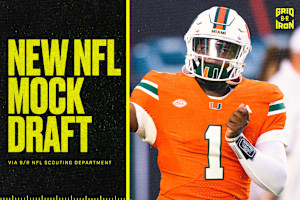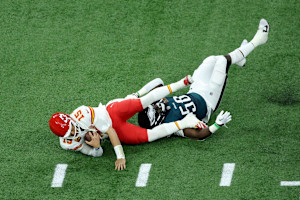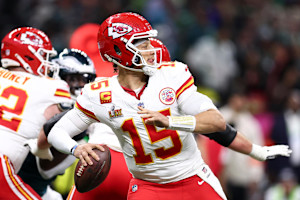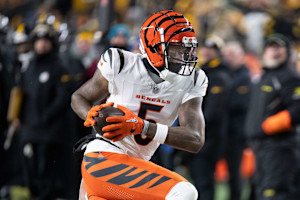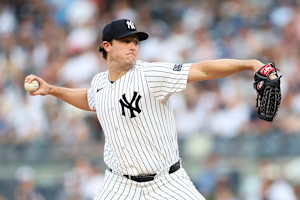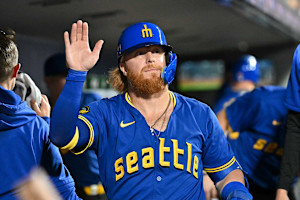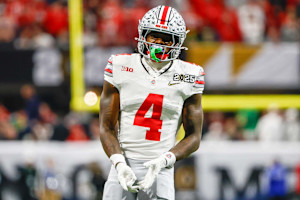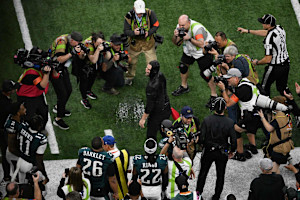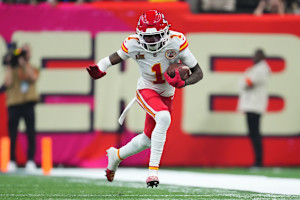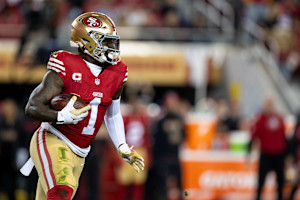PES 2020 Review: The Best Pro Evo Ever with the Worst Problems
September 12, 2019
Something magical happened a few hours into playing eFootball Pro Evolution Soccer 2020.
My barebones Manchester United midfield—Paul Pogba, Andreas Pereira and Konami ambassador Scott McTominay—was getting absolutely battered. Nobody could keep the ball as Arsenal's midfield physically imposed themselves on a game I was winning 1-0.
In search of control, I subbed on Jesse Lingard (bear with me). His work rate and agility immediately pulled possession back into my grasp and helped to see out the win. Lingard's energetic pace on the press and ability to dribble away from danger eliminated pressure and underlined a key victory in this year's game: every type of player is useable.
A consistent gripe in football games is that the smaller, less physical players are difficult to succeed with. PES has steadily got better in this regard, particularly when compared to FIFA, but the Andres Iniestas of this world have never received the virtual prowess they deserve. Football's subtle geniuses—players who float between the lines, skip away from tackles and recycle possession—are now able to define matches.
Iniesta himself was brought in to help evolve this year's "finesse dribbling" system. This isn't like FIFA skill moves; you won't see multiple El Tornado crosses per match or an array of ridiculous over-the-top spins and flicks every time someone gets the ball. This is more intricate and challenging to consistently execute.
PES 2020's smartest skills focus on subtle shifts of weight and quick changes of direction. Feints and wobbly legs may carve open an opportunity or get you out of danger, but the game is unforgiving if you lose the ball in a dangerous area.
It shouldn't be overlooked that just effectively carrying out the mundane—winning a tackle, darting around an opponent and playing a safe pass—is hugely satisfying. Taking care of the ball is an important element that builds the foundation for success. Concentration is vital, as the quality of your pass is heavily affected by posture, pressure and the speed you're running at.
Strikers are more likely to snatch a shot if they're belting towards goal at full pace or are pressured by a defender. Even playing the ball back to your goalkeeper requires focus, as if you're not facing the right way, there's a good chance it won't reach its target. This sense of timing and picking your moment filters through PES 2020.
Finishing chances inside the box often comes down to nailing an opportunity when an inch of space opens up. Standard shots are more varied than before, with players adapting to situations in a realistic way. In previous years, most strikes felt like they were hammered with the laces, but players are now likelier to slot in a chance or attempt a finish that makes contextual sense.
Controlled shots were overpowered in PES 2019 and allowed for too many curled goals, but they're harder to pull off this time. You don't need much power to hit the ball hard, so there's an adjustment period wherein you're more likely to send shots over the bar.
Even when you're used to it, keepers do a better job of scrambling to cover the postage stamp region of their goal. It feels like effort has been made to make sure wonder strikes remain enthralling rather than becoming the norm.
PES' year-to-year evolution has been defined by smart tweaks like this in recent seasons. However, a handful of familiar issues still arise despite the developer's emphasis on listening to community feedback. In fact, some of the more serious problems are getting worse.
Most notably, problems with player switching can kill enjoyment. Unresponsiveness has a habit of crippling matches at a vital moment as you're unable to choose between two players who are close to a quickly moving ball.

On occasion, loose passes roll straight past defenders as they stand and watch, a frustration emphasised when the next switch has you controlling someone further away. Multiple players slowly turn and gawp as the striker nips in for a simple chance. This issue comes up across the entire pitch and undermines a lot of the excellent work elsewhere.
You can go multiple matches without experiencing the problem, but that doesn't make things easier. The trouble is more prominent than it has been in previous years, perhaps down to the increased physical pressure in each game and the need to read situations with haste.
Another fundamental downfall that appears less frequently is passes going in the wrong direction. This seems to appear when you've got two players in space near to each other. If you clearly aim to your team-mate on the left, sometimes it'll go to the player on the right, quashing momentum in an instant.
Neither issue was noticeable in the game's demo, so some questionable tweaks seem to have been made. This can also be applied to referees who were too nitpicky in the demo but are now back to being inconsistent and prone to missing obvious calls.
Two-footed lunges that demolish a player after often ignored, while exerting a little too much strength in an aerial dual may be brought back for a yellow card. It's rare the AI will get punished, as cautions and penalties remain extremely rare, suggesting an early patch needs to be released.
Another persistent irritation returns in the form of commentary. All your favourite (terrible) lines are here, from Peter Drury screaming everyone's name whenever they shoot to Jim Beglin gibbering about "ebb and flow" or quoting Elvis Presley songs. Add in the fact that menus remain verbose, and you have to wonder whether this is some long-running joke nobody understands outside the devs.
Other areas of the game's presentation give the illusion they've been spruced up when the reality is not so exciting.
Master League's layout is slightly more straightforward (and dare I say it, feels more FIFA), but it's still too complicated. For instance, one message into your manager's inbox will say the month's Best XI has been named, but you can't directly click through. Instead, it provides three-step instructions on how to reach the team from another screen. This is needless and only gives fuel to those who belittle PES.
The addition of legendary managers such as Johan Cruyff and Diego Maradona is a nice touch, but aside from being able to choose their matchday outfits, there's not much else to make them particularly interesting. As with FIFA's tedious transfer negotiations of years gone by, the addition of basic cutscenes also quickly get old.
You'll set objectives with backroom staff, respond to press conference questions and receive advice, but none of it has much of an impact. Interactions don't slow things down too much, although only the most patient players will resist the urge to skip through as quickly as possible.
Transfer business is more realistic this year, with player values reflecting reality. For example, emerging talent Jadon Sancho is worth around £90 million in a change that forces you to consider which players to buy. Even mid-tier players like Leander Dendoncker will set you back £50 million if Wolverhampton Wanderers feel they don't have to sell. Clubs are reluctant to lose important stars, although release clauses are an easy way to trigger deals.
Some iffy things do happen in the transfer market, though. In my first season, Tottenham Hotspur put Harry Kane up for sale and then removed him a couple of weeks later, but there was no explanation as to what happened. It would have been great to see a narrative play out or any justification as to why he was briefly available.
Upon trying to sign Bruno Fernandes for Manchester United, it became clear he didn't believe his role at the club would be significant enough. However, there was no way to convince the Sporting CP playmaker he would be an important star aside from offering higher wages. He outright rejected every approach for the same reason. Just a little more depth and explanation would go a long way.
The expense of each player means it's harder to quickly rebuild sides. This forces you to find value in squad players like the aforementioned Lingard and Pereira, the types of players most wouldn't naturally utilise. They became useful and increasingly valuable members of my transitioning side.
Lingard's starting valuation of £36 million underlines how you won't be able to easily assemble a team of Galacticos, especially when Lionel Messi, Kylian Mbappe and the best cost in the region of £400 million each. This is an interesting tweak, but there are few other new features to get excited about.
This is also true for MyClub, which continues to struggle in the shadow of FIFA's Ultimate Team because of the lack of any notable evolution. Little has changed in a mode that places an emphasis on finding big stars and improving them rather than constantly opening FIFA-style packs for a huge pay-off.
The premise remains a good one, but world-class players are dished out far too easily. After one game, I had Sergio Aguero and Patrick Vieira—two picks that could define your year on FUT but barely keep things ticking over in MyClub.
The game also feels faster online. That's not a good sign at this time of year, before everyone is rocking a team of superstars that should only take weeks to assemble if you play it regularly. PES becomes less intricate online and is only likely to get worse as teams improve.
As such, the new eFootball moniker and focus on esports is unlikely to capture a new audience. The new branding, and marketing coups like Juventus' licence, can only carry the game so far.
It's more important for PES to play a better game of football than FIFA, as without on-pitch superiority, there's barely a new selling point. FIFA players have had The Journey and will soon get Volta, whereas Konami's modes have remain largely untouched for years.
Your enjoyment of PES 2020 will therefore come down to how much you appreciated the opening anecdote of this review. If minimal tweaks that get into the weeds of football excite you, then you'll have an absolute blast in what is the best game of virtual football when working to its potential.
Even so, a difficult truth remains. PES 2020 is likely to frustrate players who are invested in the series, and it doesn't do enough to significantly capture the attention of a new audience. It shouldn't be this difficult to recommend a game that can play so wonderfully, but the usual problems are here and worse than ever.
The best will never be good enough if Konami continues to pretend the franchise's problems are OK.
Game summary: Gameplay: 8/10, Graphics: 8/10, Modes: 5.5/10, Overall: 7.5/10
B/R Recommends




